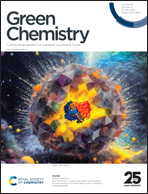Principles and theories of green chemistry for corrosion science and engineering: design and application
Abstract
Given the high toxicity of inorganic inhibitors, organic substances, primarily heterocycles, have been proven to be one of the most efficient, cost-effective, and practical alternatives. Severe limitations in the application of organic corrosion inhibitors, particularly their environmental toxicity, have greatly accelerated the investigation of eco-friendly and sustainable alternatives. Corrosion control has made significant use of green chemistry ideas in recent years. This involves using different sustainable materials, techniques and strategies for corrosion control. Bio-based materials, including plant extracts, natural polymers, gums, waste, amino acids, and carbohydrates, are widely employed as sustainable materials. They are considered the best eco-friendly substitutes owing to their natural origin, biodegradability, and non-accumulation. Recently, several green synthetic techniques have been used to create green synthetic inhibitors, including microwave (MW) and ultrasonic (US) irradiation, particularly in conjunction with one-step multicomponent reactions (MCRs). Besides being green and sustainable, compounds derived from MW and US irradiation are more effective inhibitors than those obtained via traditional synthesis. Synthetic inhibitors derived using sustainable chemicals, solvents, and catalysts are also regarded as green alternatives. Inhibitors synthesized using natural substrates such as AAs and carbohydrates are semisynthetic alternatives. Recently, self-healing and synergism have emerged as additional environmentally friendly corrosion prevention methods. Computational modeling and simulations such as density functional theory (DFT), molecular dynamics (MD), and Monte Carlo (MC) simulations save money and resources by minimizing the number of experimental trials. Herein, we discuss the current research on using various eco-friendly and sustainable materials, technologies, and strategies for corrosion prevention together with their challenges and opportunities.

- This article is part of the themed collection: 2024 Green Chemistry Reviews


 Please wait while we load your content...
Please wait while we load your content...